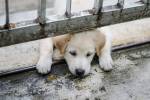OUTDOOR BRIEF
EXPLORE NATURE
Holidays a good time to go animal tracking with the kids
With winter storms dropping snow in the high country, the holiday season is an excellent time to take the kids outside for some snowy fun. It's also a good time to teach the kids, and anyone else who's interested, about Nevada's wildlife.
When snow covers the ground, it makes animal tracks easy to see, and kids can have fun seeking them out for themselves. The first thing they'll want to know is what animal made the tracks, and that's where the teaching opportunity presents itself. It helps to take along a field guide for animal identification. Sketches of different animal tracks also are available on the Nevada Department of Wildlife Web site at www.ndow.org/wild/animals/tracks/index.shtm. Pocket track identification guides also are available at nearly every public lands visitor center.
"Animal tracks, and where they are found, can give kids and adults alike a glimpse into the life of the animal that made the tracks. You can find out where they live, what they eat and even what they do," said Doug Nielsen, conservation education supervisor for NDOW. "It's like solving a wildlife mystery."
When you see a set of footprints made by an animal, look at the shape of it. Does it have a cloven hoof like deer, five toes like coyotes and lions, or claws belonging to a bird? Five toes close together on a long narrow foot may indicate a rabbit. If you're near water, prints could be webbed, signifying a duck. Measure the relative size of the print. Is it as big as your child's hand? Or are there many tiny prints running in a line? Are the prints deep in the snow, which would be made by a heavy animal, or skimming along the surface, which could mean a little rodent?
Have the kids make their own footprint next to the animal track. Do they think the animal print could be from an animal larger or smaller than them? Can they tell if the animal has a short stride, with prints close together, or a large stride like the kids have when they're running?
You and your children also can look for other signs of wild animals nearby. Ask them if they see animal feces, called scat. Then look around at the vegetation. Do they see bedding down places where snow is disturbed and grass and brush is pushed down? You also can look for bushes that have been nibbled off. Animals are on a constant search for food in the winter.
All of these signs can tell you what animals are living in the area where you and your children are playing. It's more likely that you'll see the signs rather than the actual animals. One thing to discourage your kids from doing is following the tracks to see if they can find the animal, especially if the tracks look fresh. A good alternative is to have the kids draw the prints they see in a makeshift journal -- any paper you have available will do. They can put it together later, decorating and making notes when they figure out the identification.























